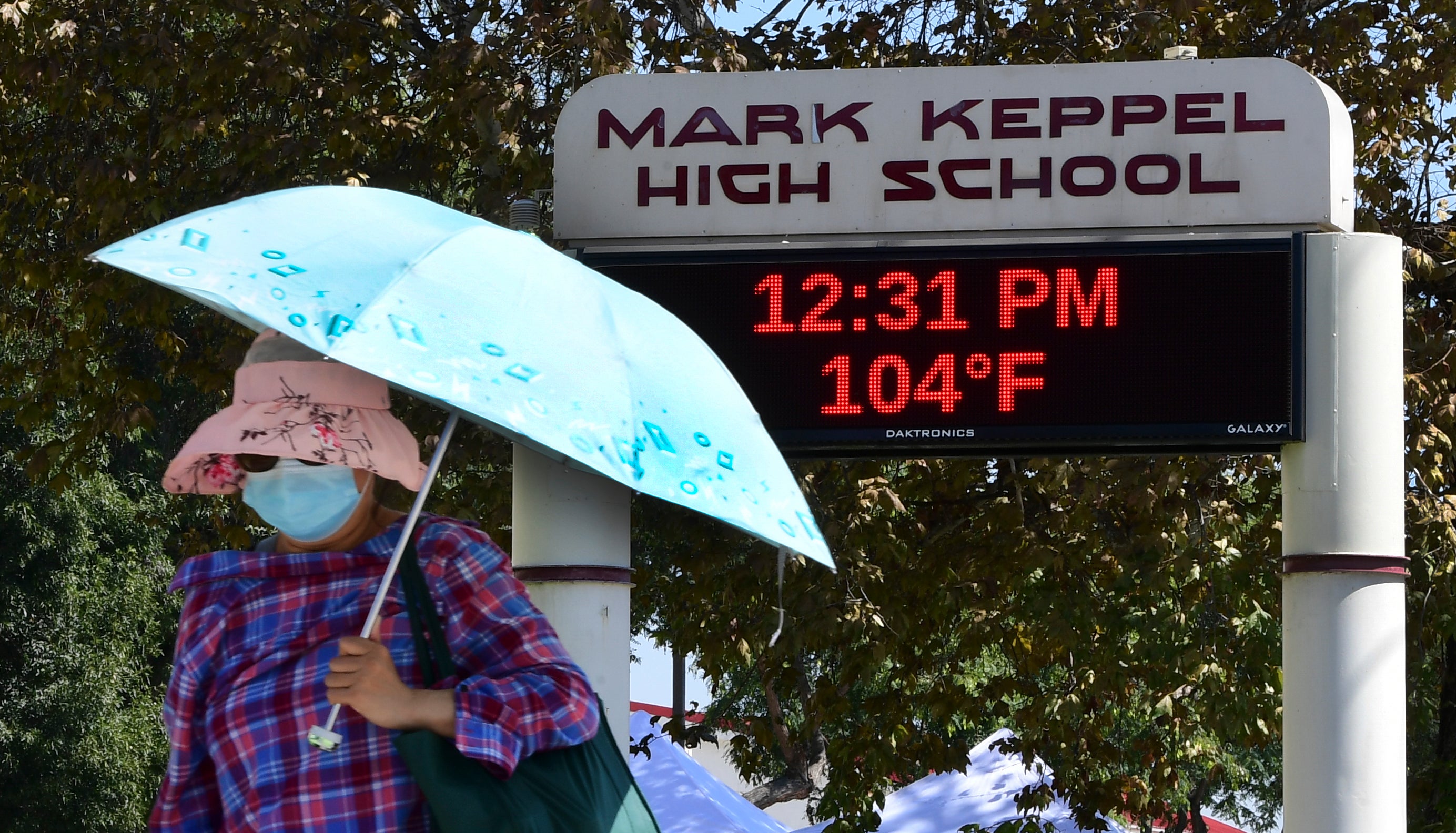Millions of US kids attend schools in dangerous ‘urban heat zones,’ analysis finds

Millions of U.S. children attend schools located in cities disproportionately threatened by the impact of climate change, researchers recently warned.
Climate change is making heat waves more frequent and intense, and dialing up humidity — which can make climates feel even hotter. Cities absorb and re-emit heat from the sun more than natural landscapes, thanks to their highly concentrated buildings, roads and infrastructure. These pockets of heat are known to climate scientists as “heat islands,” resulting in temperatures up to 20 degrees higher for cities and their inhabitants.
Humid regions and communities with larger and denser populations and more buildings — such as the East Coast’s New York City and the West Coast’s San Francisco — experience the greatest temperature differences. The heat island effect is expected to strengthen and grow in the future, as urban areas become more populated. This puts children in those areas at a heightened risk.
Children are already one of the groups most vulnerable to extreme heat: the nation’s top killer. Furthermore, many schools do not have adequate air conditioning. A Government Accountability Office report in 2020 found that tens of thousands of schools need their heating and cooling systems replaced or updated.
More than 80 percent of Americans live in urban areas. Now, a new report from non-profit Climate Central says the majority of K-12 public school students located in the nation’s biggest cities go to school on “extreme” urban heat islands. Approximately 76 percent are in zones where temperatures are at least 8 degrees higher than outlying areas.
“Across the nearly 6.2 million K-12 public school students included in this analysis, the average student attends school in neighborhoods that are 8.3 degrees hotter due to the built environment,” the report found.

In an analysis of 65 of America’s largest cities and more than 12,000 K-12 public schools, Climate Central said that in a quarter of the cities assessed, nine in every 10 students attend a school located in an extreme urban heat island.
The city with the lowest additional heat for the average student was Phoenix.
New York City, the largest city in the country, had the maximum additional heat, with an increase of 9.6 degrees.
Climate Central said in 62 of the 65 cities studied that at least half of all K-12 students attend public school in extreme urban heat zones. The three exceptions included Boston, Providence, Rhode Island, and Richmond, Virginia.
Among the included cities, Louisville, Kentucky, Orlando, Florida, and Wilkes-Barre, Pennsylvania, have the largest shares of public K-12 students enrolled at schools in extreme urban heat zones.

The analysis is based on Climate Central’s previous modeling work and data from the National Center for Education Statistics.
The report also noted that the risk is not equally felt. Urban heat islands are more likely in lower-income and non-white communities and Climate Central said burdens have linked to a history of racially biased housing policy.
With hotter temperatures expanding into the fall and winter months, the authors have called for action to prevent greater impacts on children.
“Future generations are likely to face accelerating change and intensifying risks — particularly from heat waves — with continued warming,” the group asserted. “Ultimately, a commitment to rapid, sustained cuts to carbon pollution is the most impactful action to slow the rate of warming and set younger generations on a different path, toward a safer future.”
